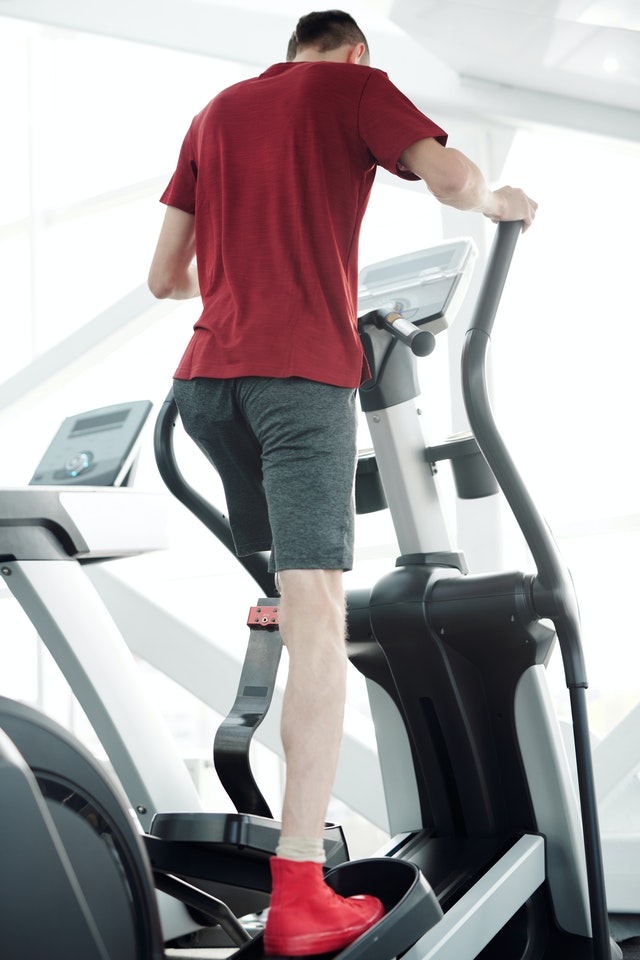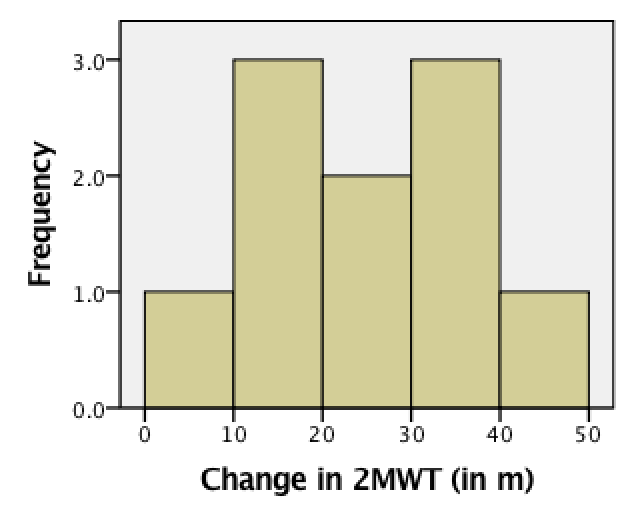9.4 Tests for paired samples

(This continues from Sect. 7.5.)
A study (Guirao et al. 2017) examined the \(2\)-minute walk times (2MWT) before and after receiving a prosthetic implant. The 2MWT measures how far participants can walk in two minutes. The RQ was:
For this type of amputee, is the mean 2MWT improved (i.e., longer distances walked) after using the implant?
Explain why these data should be analysed as a paired situation.
Which of the following is the correct null hypothesis for this question? Why are the others incorrect? Is the test one- or two-tailed? What is the alternative hypothesis?
- \(\mu_{\text{Without Implant}} = \mu_{\text{With implant}}\)
- \(\mu_{\text{Difference}} = 0\)
- \(\mu_{\text{Difference}} > 0\)
- \(\mu_{\text{Without Implant}} = 0\)
- \(\mu_{\text{With implant}} = 0\)
- \(\mu_{\text{Without Implant}} < \mu_{\text{With implant}}\)
- \(\mu_{\text{Difference}} < 0\)
- \(\mu_{\text{Without Implant}} < 0\)
- \(\mu_{\text{With implant}} > 0\)
Explain the meaning of the standard error of the mean difference in this context.
The data for the ten amputee subjects are shown in Fig. 9.4. Write down the mean difference, standard deviation of the difference, and standard error of the mean differences, using Fig. 9.5 or Fig. 9.6.

FIGURE 9.4: Two-minute Walk Times (2MWT) for \(10\) patients with implants (With Imp) and without implants (Without Imp), in metres

FIGURE 9.5: Output from jamovi for the 2MWT example, partially edited

FIGURE 9.6: Output from SPSS for the 2MWT example, partially edited
Write down the value of the \(t\)-statistic, then estimate the \(P\)-value for testing the hypotheses.
Explain why the \(t\)-scores from jamovi and SPSS have different signs (in jamovi: negative value; in SPSS: positive value).
Write a statement that communicates the result of the test.
What conditions must be met for this test to be valid?
Is it reasonable to assume the assumptions are satisfied? Use the histogram of the data in Fig. 9.7 to help.

FIGURE 9.7: Histogram of differences for the increases in 2MWT with implant